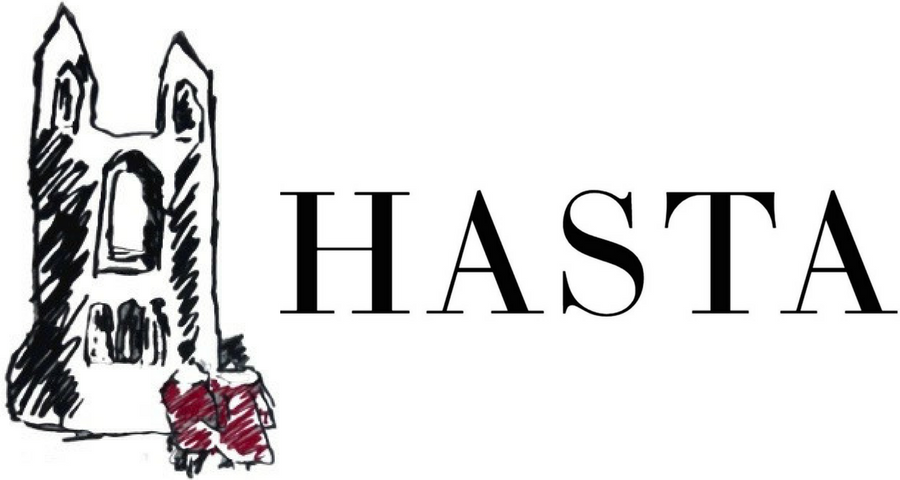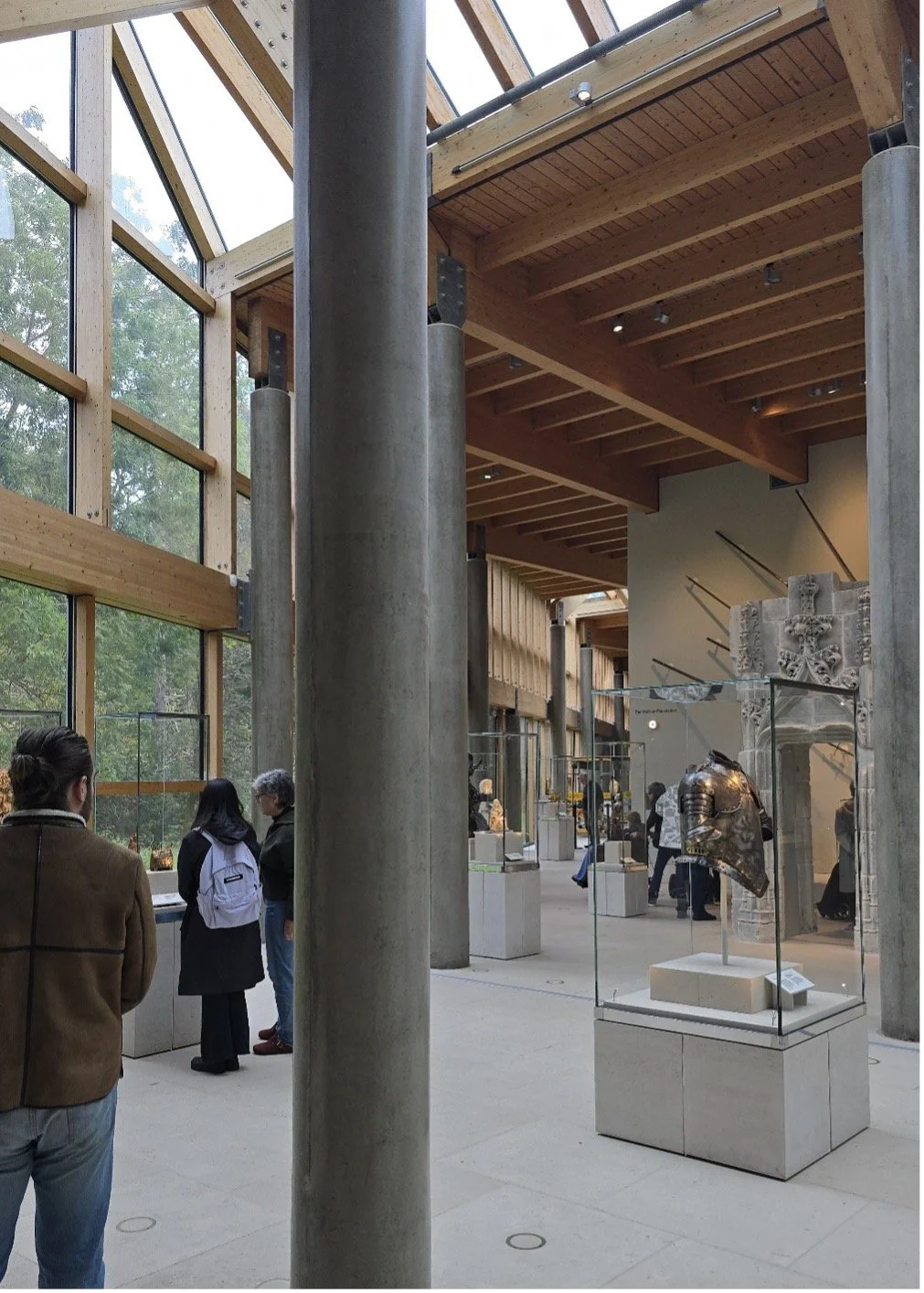Who is the Museum For? Class, Inclusion, and The Burrell Collection
By Emma Montague
The Burrell Collection in Glasgow reopened in 2022 after a six-year, £68.25 million redevelopment. The key concept of ‘who is the museum for?’, shaped the project, transforming it from an elite cultural institution into an inclusive, public space. Once the private collection of wealthy merchants, The Burrell now stands as one of Scotland’s most considerate examples of how museums can repair historical barriers of class, culture, and access.
The Burrell Collection exterior, Glasgow.
Image courtesy of What’s On Glasgow.
Sir William and Lady Constance Burrell, shipping magnates and art collectors, gifted their collection to the city of Glasgow in 1944. Sir William “believed in free education for all and wanted the people of the city to be able to access his fine collection”. However, when the museum opened in 1983, it failed to appeal to a majority of locals. Its academic displays and interpretations appealed mainly to older, white, and middle-class audiences, leaving many Glaswegians feeling that The Burrell was “not for them”.
The redevelopment aimed to change this perception, and over 15,000 residents participated in consultations through interviews, workshops, and surveys, including schools, disability and refugee groups, and minority communities. Their input helped shape the redesign, from interpretation and signage to accessibility and amenities. The project’s Equality Impact Assessment set a clear goal: to remove barriers and ensure that all citizens feel welcome.
The Burrell Collection, 2025, Glasgow.
Image courtesy of the author.
The results of these consultations are visible in both the architecture and ethos of the new Burrell. The building is physically and metaphorically transparent: glass walls allow views outside to Pollok Country Park, and open galleries replace the structured display systems of a more traditional museum layout. Artworks are displayed according to themes that provoke connections across cultures and eras, and interactive, digital displays and bilingual labels connect the collections’ global art to Glasgow’s own histories of industry and empire, inviting visitors to explore, instead of being taught. The museum also addresses the colonial backgrounds of many of its objects, acknowledging that parts of the collection reflect wealth generated through earlier exploitation. By placing such works within their historical settings, the Burrell combines aesthetic admiration with ethical awareness.
The Burrell Collection, Burrell Project Stories, Glasgow.
Image courtesy of The Burrell Collection.
Equally important is the Burrell’s encouragement of participation. Community co-curation projects have involved local groups from across Glasgow, while new programmes offer free family workshops, creative sessions for adults with learning differences, and inclusive activities that make the museum feel open and welcoming. Consultation feedback also led to practical improvements, such as quiet zones for neurodiverse visitors, gender-neutral and accessible bathroom facilities, and fully navigational discovery routes.
The impact is notable, with families now making up more than half of all visitors, and significant increases in visitors from areas of higher social deprivation, previously underrepresented in participation. The Burrell has managed to renew not only its physical presence, but its social purpose. It has become a space of multi-cultural citizenship, where visitors and Glaswegians alike can experience global art as part of their own mutual heritage.
The transformation of The Burrell also reflects a broader shift in museology and how art history is being presented. Historically, museums were designed to teach and refine public audiences, linking culture with good citizenship, though usually in ways that favoured the upper-class. Today, they are reimagined as places of open dialogue, consideration, and inclusion for all. The Burrell Collection illustrates this shift with integrity, remaining a world-class museum, but one which is grounded in generosity over status.
The question“who is the museum for?” finds its answer in The Burrell’s galleries. It is a space for families, for schoolchildren, for adults, for local communities, and for visitors seeking to learn, reflect, and connect with art, history, and with one another. In a city shaped by labour, migration, and the resilience of its people, The Burrell shows how thoughtful curation of shared heritage can nurture a sense of belonging without compromising historical honesty or artistic excellence.
Bibliography
Bennett, Tony. The Birth of the Museum: History, Theory, Politics. Routledge, 1995.
Brooks, Libby. “Glasgow’s Burrell Collection Reopens After £68m Refurbishment.” The Guardian. February 8, 2022. https://www.theguardian.com/uk-news/2022/feb/08/glasgow-burrell-collection-reopen-68m-refurbishment-slave-trade
Brooks, Katherine. “The Burrell Collection: A Museum for All?” Museums Journal 124, no. 3 (2023): 42–47.
Cumming, Elizabeth. The Burrell Collection. Scala Arts & Heritage, 2022.
Fotheringham, Amy. “Glasgow Communities Have a Voice in Rebuilding the City’s Famous Burrell Collection.” Glasgow Times. 20th November 2021. https://www.glasgowtimes.co.uk/news/19729422.glasgow-communities-voice-rebuilding-citys-famous-burrell-collection/
Glasgow Life. “The Burrell Collection Equality Impact Assessment.” 2022. https://www.glasgowlife.org.uk/media/4192/burrell-collection-equality-impact-assessment-160419.pdf
The Burrell Collection. “Community Involvement.” Burrell Project Stories. Accessed October 6, 2025. https://burrellcollection.com/burrell-project-stories/community-involvement/
The Burrell Collection. “The Collection, the gift to Glasgow and the charity that cares for it.” About The Burrell. Accessed October 6, 2025. https://burrellcollection.com/the-collection-the-gift-to-glasgow-and-the-charity-that-cares-for-it/



